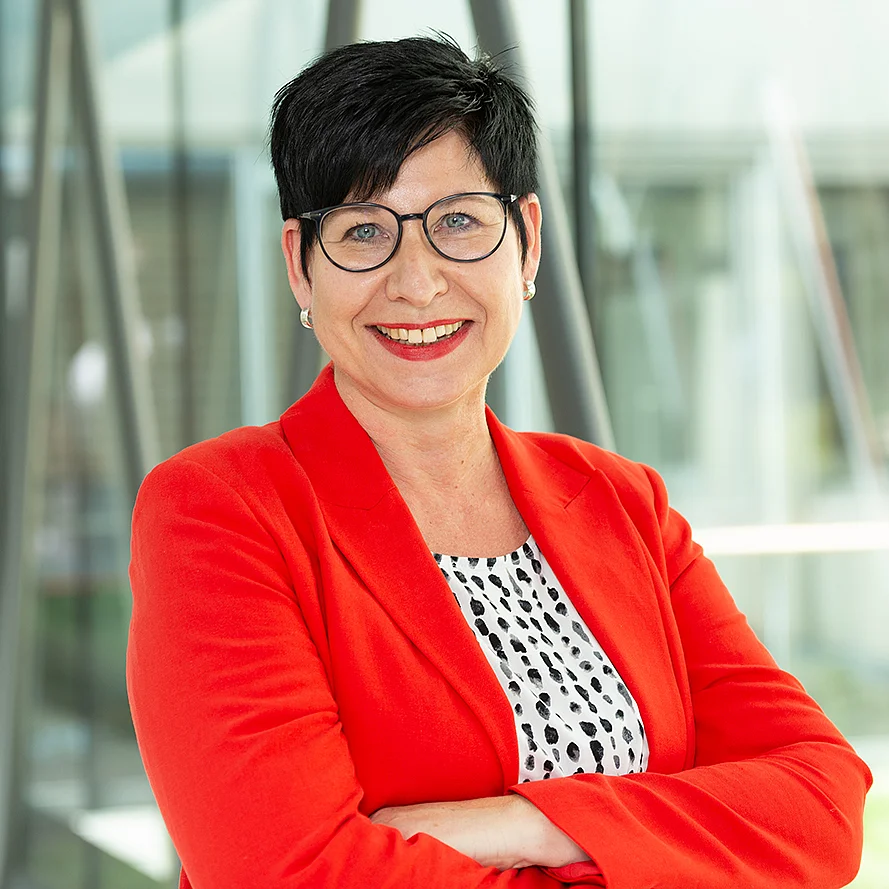The economic concerns of the MHH have attracted a great deal of attention over the last few years. This phase was very much defined by figures and the economic recovery of the MHH, while the scientific changes went on in the background. What kind of phoenix is rising from the ashes now, Professor Baum?
We managed to overcome the economic crisis, we have been economically stable for the last two years and we can now focus on substance once again. We formulated a development plan in 2014. Our core focus is to enhance the integration of research, teaching and healthcare. In parallel, we developed a structural concept in which we defined three priorities: the development of the school, outstanding teaching and excellent research. And this structural concept is now informing the development of personnel at the MHH.
How have you pursued this concept with regard to research over this period?
During the process, we focused very much on the importance of nurturing young scientists. We have established new programmes, such as the physician scientist programme, and have collaborated closely with the HZI on these matters – and in other areas as well.
And in terms of substance?
In terms of substance, we have defined our specific areas of research: infection and immunity. Transplantation and regeneration. Biomedical technology and implants. And we have identified linking elements between these three pillars – always at the interface between healthcare and its consequences for research.
Is there a weighting between these three areas – that is to say, what is the role of infection research in the context of the MHH?
Infections play a key role in daily clinical practice and are one of our domains – in close conjunction with TWINCORE and the HZI. And in daily clinical practice – which is always our mainspring, because our research is ultimately patient-focused – we see infections as a major problem. From neonatology and premature newborns to complications in critically ill patients with different underlying diseases from cancer to terminal organ failure, or transplants with immunosuppression. Infections are always key to the prognosis that the patients have. We need high levels of clinical and scientific expertise in order to manage this situation.
And the HZI contributes to this scientific expertise?
Absolutely. This is a long-standing alliance and Dirk Heinz and I are keeping it going. If you look at the whole of Germany, we probably have the highest density of infectiology experts here in the Hannover/Braunschweig region thanks to the MHH/HZI partnership. The joint institutions of TWINCORE and CIIM play a key role here, and as they expand we will be able to achieve the required level of international visibility. In all areas of the MHH, we need to do more to appreciate the opportunities created by the interaction with the HZI. We have already achieved a great deal through the work of TWINCORE. A key mechanism in this regard is the physician scientist programme.
Are you planning to establish more physician scientists at the Braunschweig campus?
Most of them are at TWINCORE, and we expect that they will be primarily based here on the campus for CIIM projects too. It is still difficult to commute on a daily basis. If we expect the physician scientists not to lose touch with clinical practice, it is important that the research laboratory is as close as possible.
Do you think the collaboration between MHH and HZI will be focused on the TWINCORE and CIIM sites in the future, or do you also foresee joint research being undertaken at the HZI campus – that is to say, what role will the HZI as a campus play in the future of the MHH?
There is still a great deal of potential in direct interactions with the main campus in Braunschweig, but the new subsidiaries – as I call them – offer potential as well. We can still improve significantly in the field of active ingredient research, and we also need to rigorously develop our collaboration with the HIRI, as the field of RNA-based mechanisms and therapies features heavily in our work at the MHH.
If you take a step back and consider the partnership – what difficulties do you see?
The 70-kilometre distance remains the greatest challenge.
And do you have any requests for the HZI?
I would like us to collaborate more closely on the programmes for young scientists, and work as a single team to nurture new talent in our field. For me personally, establishing the TRAIN Academy as an interdisciplinary, interprofessional platform for translational sciences was very important. And I think we should also look at how we can improve our collaboration with regard to students, because we need to start attracting the finest talent here as early as possible.
Author: Jo Schilling


